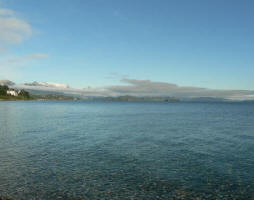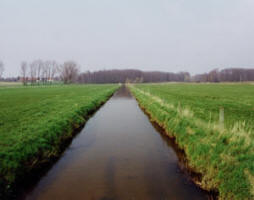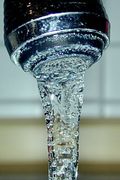 Improved Forecasting of Floods and Droughts
Improved Forecasting of Floods and Droughts
Theory suggests that soil moisture has a positive impact on precipitation, but there have been very few large-scale observations of this. A team of researchers from Columbia Engineering and Rutgers University has however demonstrated that evaporation from the land surface is able to modify summertime rainfall east of the Mississippi and in the monsoonal region in the southern US and Mexico.One of the team’s main findings is that evaporation from the land is only able to modify the frequency of summertime rainfall, not its quantity. “This is a major shift in our understanding of the coupling between the land surface and the atmosphere, and fundamental for our understanding of the prolongation of hydrological extremes like floods and droughts”, said Pierre Gentine, Assistant Professor of Applied Mathematics at The Fu Foundation School for Engineering and Applied Science at Columbia University, and co-author of the paper ‘Probability of Afternoon Precipitation in eastern United States and Mexico Enhanced by High Evaporation’, published online June 5 in the journal Nature Geoscience.
The researchers used data from the National Centers for Environmental Prediction (NCEP) to quantify the impacts of continental evaporation on the frequency and intensity of summertime rainfall over North America. They discovered that higher evaporation increases the probability of afternoon rainfall east of the Mississippi and in Mexico, while it has no influence on rainfall over the Western US. The difference is due to the humidity present in the atmosphere. The atmosphere over the western regions is so dry that, no matter what the input of moisture via evaporation is from the surface, an added source of moisture will not trigger any rain since it will instantaneously dissipate into the atmosphere. The atmosphere over the eastern regions is sufficiently wet so that the added moisture from the surface evaporation will make it rain.
“If it starts getting really wet in the east”, noted Gentine, “then the surface will trigger more rain so it becomes even moister, and this sets up a vicious cycle for floods and droughts. Nature – i.e. the land surface and the vegetation – cannot control the rainfall process in the west but it can in the east and in the south. This is really important in our understanding of the persistence of floods and droughts.”
Consequently, once a flood or a drought is triggered by large-scale processes such as sea surface temperature anomalies, the flood/droughtconditions are most likely to persist in the eastern and southern US. In the west however, the duration and frequency of floods/droughts are controlled only by oceanic processes: the surface cannot modify the rainfall process. Whether the soil is dry or wet does not change subsequent rainfalls: consequently, the surface will not help hydrological extremes persist (e.g. floods/droughts).
Gentine is developing a theoretical framework to understand the precipitation and cloud formation over land and says this should be an important breakthrough in our understanding of how soil moisture and vegetation controls cloud formation and the precipitation process. “I find this work fascinating because it’s a great blend of theoretical research – understanding how nature works – and practical applications that affect our world – likeflood/drought/water management.”
Kirsten L. Findell, Pierre Gentine, Benjamin R. Lintner, Christopher Kerr. 2011. Probability of afternoon precipitation in eastern United States and Mexico enhanced by high evaporation. Nature Geoscience, 2011; DOI: 10.1038/ngeo1174
| Contact information | n/a |
|---|---|
| News type | Inbrief |
| File link |
http://www.waterlink-international.com/news/id1925-Improved_Forecasting_of_Floods_and_Droughts.html |
| Source of information | http://www.waterlink-international.com |
| Keyword(s) | Climatic change, flooding |
| Subject(s) | RISKS AND CLIMATOLOGY |
| Geographical coverage | n/a |
| News date | 10/06/2011 |
| Working language(s) | ENGLISH |
 you are not logged in
you are not logged in





